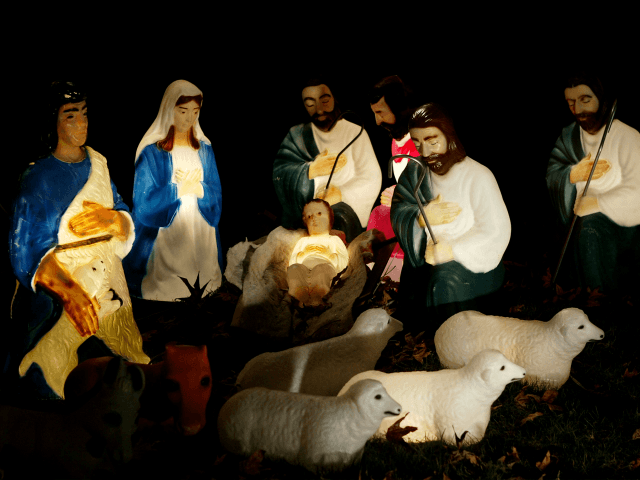ROME — Pope Francis has called for renewed efforts to exhibit Nativity scenes in order to keep the true meaning of Christmas in the public eye.
“I wish to encourage the beautiful family tradition of preparing the nativity scene in the days before Christmas, but also the custom of setting it up in the workplace, in schools, hospitals, prisons and town squares,” the pope wrote in a letter published Sunday on the importance of the manger scene.
“As children, we learn from our parents and grandparents to carry on this joyful tradition, which encapsulates a wealth of popular piety,” he said. “It is my hope that this custom will never be lost and that, wherever it has fallen into disuse, it can be rediscovered and revived.”
In his letter bearing the Latin title Admirabile Signum (“Enchanting Image”), the pope underscores the value of the Nativity scene to remind people what is being celebrated on Christmas, just when in many parts of the world, atheists and secularists are striving to have the manger scene eliminated from public display.
“The nativity scene is like a living Gospel rising up from the pages of sacred Scripture,” Francis writes. “As we contemplate the Christmas story, we are invited to set out on a spiritual journey, drawn by the humility of the God who became man in order to encounter every man and woman.”
“The enchanting image of the Christmas crèche, so dear to the Christian people, never ceases to arouse amazement and wonder,” he says. “The depiction of Jesus’ birth is itself a simple and joyful proclamation of the mystery of the Incarnation of the Son of God.”
The pope chose to release this letter on December 1, the first Sunday of Advent, the period of time marked by Christians as a preparation for the Christmas festivities.
The origin of the Christmas crèche “is found above all in certain details of Jesus’ birth in Bethlehem, as related in the Gospels,” Francis recalls. “The evangelist Luke says simply that Mary ‘gave birth to her firstborn son and wrapped him in swaddling cloths, and laid him in a manger, because there was no place for them in the inn.’”
“Coming into this world, the Son of God was laid in the place where animals feed. Hay became the first bed of the One who would reveal himself as ‘the bread come down from heaven,’” Francis says.
Pope Francis signed the new letter in the Italian town of Greccio, where Saint Francis of Assisi is supposed to have created the world’s first manger scene in the 13th century, after returning from a visit to the Holy Land, including Bethlehem.
“Why does the Christmas crèche arouse such wonder and move us so deeply?” Francis asks. “First, because it shows God’s tender love: the Creator of the universe lowered himself to take up our littleness.”
“Setting up the Christmas crèche in our homes helps us to relive the history of what took place in Bethlehem,” he adds, and the nativity scene invites us to “feel” and “touch” surrounding Christ’s birth at Bethlehem.
In his letter, the pope also recalls the visit by shepherds who “become the first to see the most essential thing of all: the gift of salvation.”
“It is the humble and the poor who greet the event of the Incarnation,” he writes. “The shepherds respond to God who comes to meet us in the Infant Jesus by setting out to meet him with love, gratitude and awe.”
“When, at Christmas, we place the statue of the Infant Jesus in the manger, the nativity scene suddenly comes alive,” the pope declares. “God appears as a child, for us to take into our arms. Beneath weakness and frailty, he conceals his power that creates and transforms all things.”
“Wherever it is, and whatever form it takes, the Christmas crèche speaks to us of the love of God, the God who became a child in order to make us know how close he is to every man, woman and child, regardless of their condition,” he insists.
The pope recently returned a small wooden relic believed to be part of Jesus’ manger to the city of Bethlehem.
On Saturday, the relic arrived in Bethlehem to much fanfare and was placed in the Franciscan Church of St. Catherine, 1,400 years after it was sent to Rome as a gift to the pope.
St. Sophronius, the patriarch of Jerusalem, sent what is believed to be the manger where Jesus was born to Pope Theodore I in the 640s, around the time of the Muslim conquest of the Holy Land.

COMMENTS
Please let us know if you're having issues with commenting.